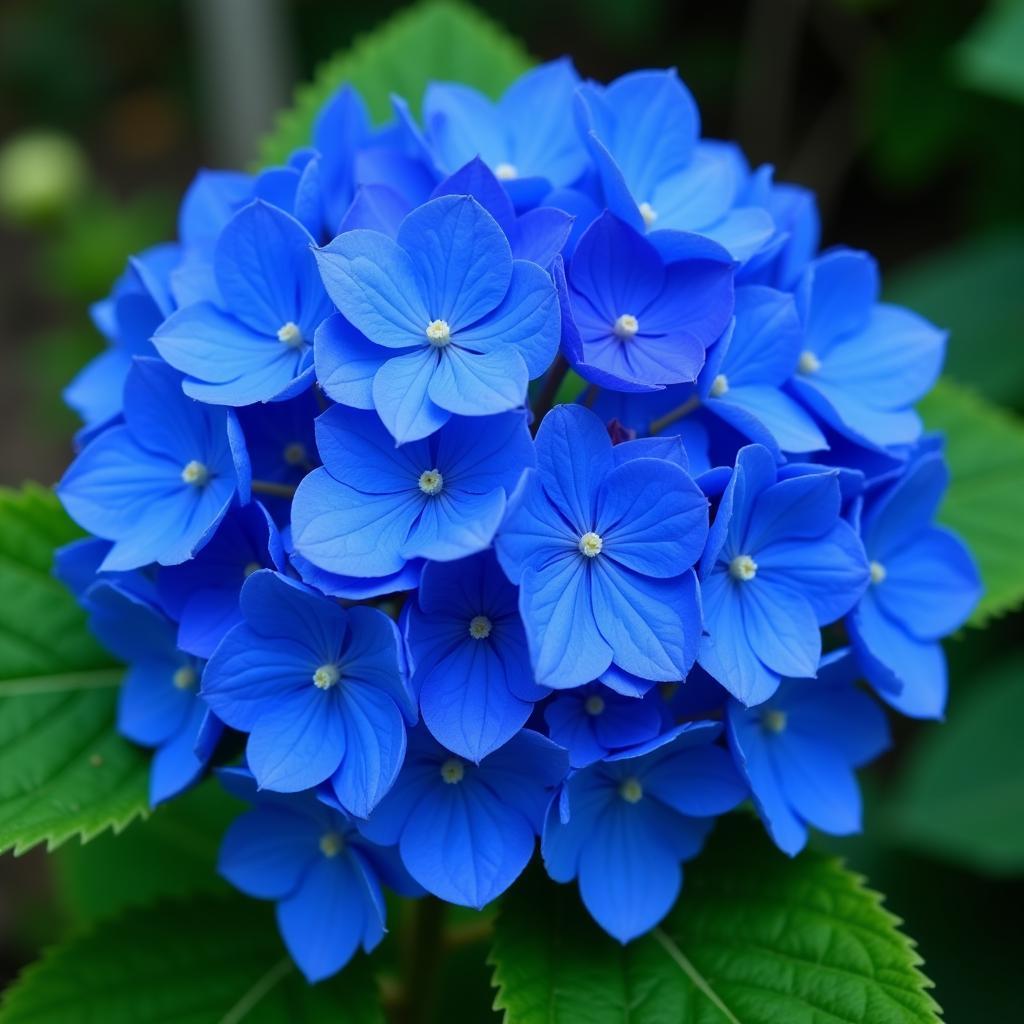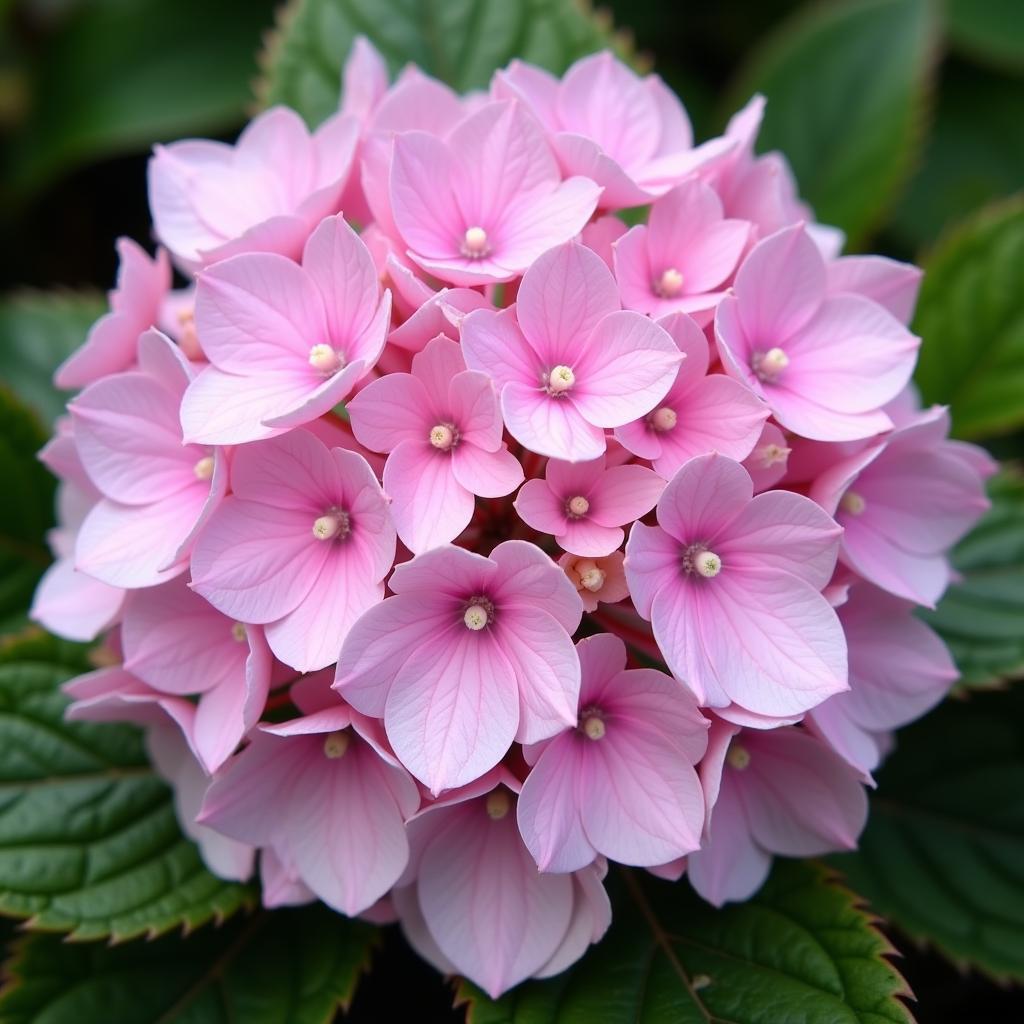Hydrangeas are prized for their stunning blooms, and even more so for their fascinating ability to shift hues. Ever wondered how to get hydrangeas to change color? This comprehensive guide will unlock the secrets behind this floral magic, allowing you to orchestrate a vibrant symphony of color in your own garden. Learn how soil pH, aluminum sulfate, and other factors influence hydrangea color, and discover how to transform your hydrangeas into breathtaking spectacles of pink, blue, purple, or even a blend of shades.
Most hydrangeas belong to the Hydrangea macrophylla species, and these are the chameleons of the hydrangea world. Their color depends primarily on the availability of aluminum in the soil, which is directly influenced by the soil’s pH. Acidic soil (pH below 6.0) allows aluminum to be absorbed by the plant, resulting in blue hydrangeas. Alkaline soil (pH above 7.0), on the other hand, locks up aluminum, leading to pink or red blooms. If your soil pH falls between 6.0 and 7.0, you may see purple hydrangeas, or even blooms with multiple colors on the same plant. Want to learn more about color correcting? Check out what does purple color correct.
Understanding the Science Behind Hydrangea Color Change
The magic behind hydrangea color change lies in a pigment called delphinidin. This pigment acts as a natural pH indicator, changing color depending on the presence of aluminum ions. In acidic conditions, aluminum binds to delphinidin, creating the vibrant blue hue. In alkaline conditions, the absence of available aluminum allows the pigment to express its natural pink or red tones. This fascinating interaction allows gardeners to influence hydrangea color by manipulating soil pH. It’s important to note that white hydrangeas generally don’t change color as their blooms lack the necessary pigments for this transformation. To learn more, check out do white hydrangeas change color.
Manipulating Soil pH to Achieve Desired Colors
So, how to get hydrangeas to change color? The most effective way is by adjusting the pH of your soil. To encourage blue blooms, you’ll need to lower the pH, making the soil more acidic. This can be achieved by adding aluminum sulfate to the soil. For pink blooms, you’ll need to raise the pH, making the soil more alkaline. This can be done by adding garden lime.
Achieving Blue Hydrangeas
To get vibrant blue hydrangeas, aim for a soil pH between 5.2 and 5.5. Aluminum sulfate is your best tool for achieving this. Follow the instructions on the package for application rates, and test your soil regularly to monitor the pH levels.
 Blue Hydrangea in Acidic Soil
Blue Hydrangea in Acidic Soil
Achieving Pink Hydrangeas
For lovely pink hydrangeas, aim for a soil pH between 6.0 and 6.5. Garden lime is your go-to amendment for raising pH. Again, follow package instructions and regularly monitor soil pH. What colors do you think combine to make purple? Find out what colors do you need to make purple.
Testing Your Soil
Testing your soil regularly is crucial for successfully changing and maintaining your desired hydrangea color. You can purchase a simple soil testing kit from most garden centers. These kits will provide you with a reading of your soil’s pH, allowing you to make necessary adjustments.
Other Factors Affecting Hydrangea Color
While soil pH is the primary factor influencing hydrangea color, other factors can also play a role, including the cultivar of hydrangea, the availability of phosphorus in the soil, and even weather conditions. Some hydrangea varieties are simply more prone to color shifts than others. Additionally, high levels of phosphorus can tie up aluminum, hindering blue coloration.
 Pink Hydrangea in Alkaline Soil
Pink Hydrangea in Alkaline Soil
“Remember, patience is key when changing hydrangea colors,” advises Dr. Amelia Green, a leading horticulturalist specializing in hydrangea cultivation. “It may take several months or even a full growing season to see significant changes.”
Conclusion
Learning how to get hydrangeas to change color is a rewarding endeavor that allows you to personalize your garden with a stunning display of vibrant blooms. By understanding the role of soil pH, using amendments like aluminum sulfate and garden lime, and regularly testing your soil, you can orchestrate a beautiful transformation in your hydrangeas, creating a mesmerizing tapestry of color. Do you love the variety of colors in other flowers like peonies? Check out the diverse shades they come in: what colors do peonies come in.
FAQ
- Can I change the color of all hydrangea varieties?
- How long does it take to see a color change in my hydrangeas?
- Can I use coffee grounds to make my hydrangeas blue?
- What is the best time of year to apply soil amendments?
- Why are my hydrangeas turning green?
- What are the best hydrangea varieties for color changing?
- Where can I buy aluminum sulfate and garden lime?
Common scenarios
- Hydrangeas turning partially pink and blue: This is usually due to fluctuating soil pH. Test different areas around the plant’s base.
- No color change after amendment application: Ensure correct application and check for other factors, such as phosphorus levels.
Further Exploration
Explore more about the effects of Epsom salt on hydrangea colors: what color does epsom salt turn hydrangeas.
Need assistance? Contact us at Phone: 0373298888, Email: [email protected] or visit us at 86 Cau Giay, Hanoi. We have a 24/7 customer support team.

